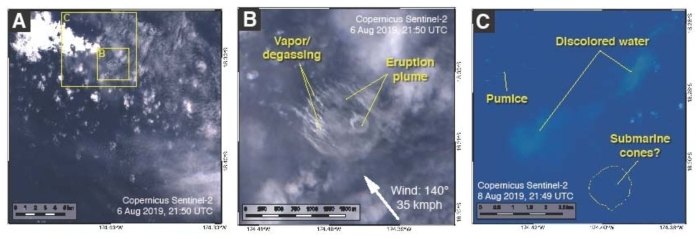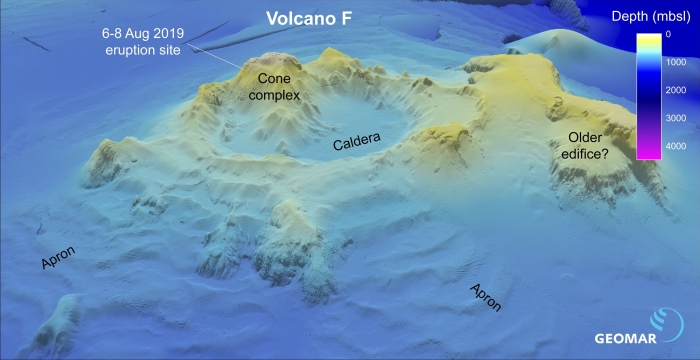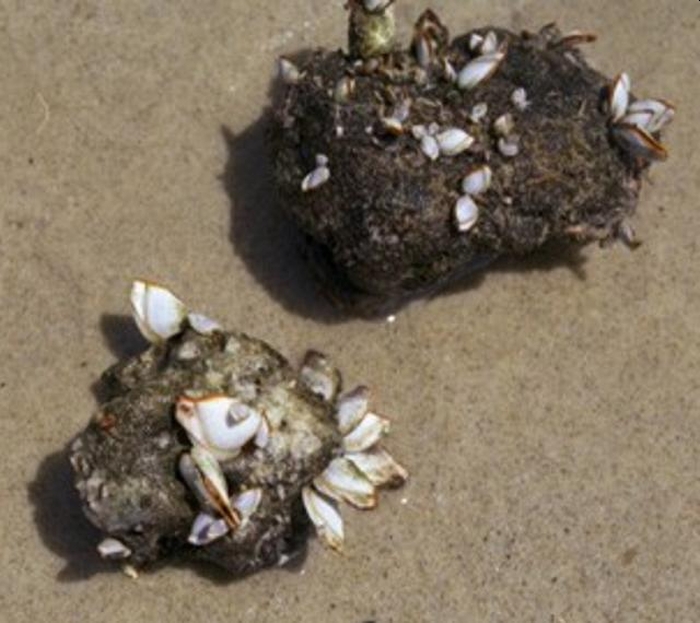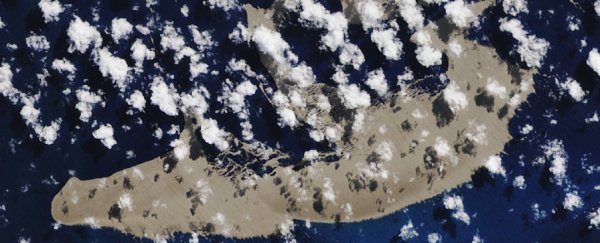A vast raft of floating volcanic rock that appeared in the Pacific Ocean a few months ago has now been traced to an origin.
This 'raft' of lightweight pumice was produced by the eruption of an underwater volcano 50 kilometres (31 miles) off the coast of the Tongan island of Vava'u - around where it was spotted in satellite imagery on August 8.
It was satellite imagery that helped an international team of geologists identify the source of the floating rock. On August 6, ESA's Sentinel-2 satellite captured two clear circular eruption plumes on the surface of the ocean.
These smoke rings were located directly above a submarine volcano on the Tofua volcanic arc, a chain of volcanoes on the edge of a tectonic plate that's moving underneath the plate next to it. The previously unnamed volcano has now been labelled Volcano F by the researchers.
The team also collected data from seismic monitoring stations, which measure the grumbling movements in Earth's crust. Volcanic activity is usually accompanied by seismic activity.
 (Brandl et al., J. Volcanol. Geotherm. Res., 2019)
(Brandl et al., J. Volcanol. Geotherm. Res., 2019)
"Unfortunately, the density of such stations in the region is very low," said geologist Philipp Brandl of GEOMAR - Helmholtz Centre for Ocean Research Kiel in Germany. "There were only two stations that recorded seismic signals of a volcanic eruption. However, their data is consistent with Volcano F as the origin."
Using multibeam sonar, the team had previously surveyed the seafloor around the volcano during December 2018 and January 2019. Those data revealed a large central volcanic caldera measuring roughly 8 by 6 kilometres (nearly 5 by 3.7 miles), with a floor 700 metres (2,290 feet) below the surface.
The top of the caldera cone was just 35 metres from the surface in 2004.
 (GEOMAR)
(GEOMAR)
The rock is itself is a highly porous, low-density stone called pumice. It's created during volcanic eruptions, when extremely hot, pressurised molten rock is violently spewed from a volcano, and then rapidly cooled and depressurised. This causes a frothing effect in the lava, which captures bubbles of volcanic gas as it cools.
Vast amounts of pumice can be created in volcanic eruptions. The pumice raft produced by Volcano F initially spanned 136.7 square kilometres (52.8 square miles, about three-quarters of the size of Washington DC), although it subsequently fluctuated a little. The estimated minimum volume of the pumice is 8.2 million to 41 million cubic metres.
Because it has a lower density than water, it floats. The pumice raft is currently drifting towards the north-eastern coast of Australia, home to the Great Barrier Reef. This is exciting to scientists, because the raft is likely to seed the reef with new life, picked up in its travels.
"Based on past pumice raft events we have studied over the last 20 years, it's going to bring new healthy corals and other reef dwellers to the Great Barrier Reef," said geologist Scott Bryan of the Queensland University of Technology in August.
The discovery that Volcano F produced the pumice is another piece of the puzzle. Although it was only just named, the volcano was actually discovered in 2001, after it disgorged a vast amount of pumice during a September eruption.
It took about a year, but that pumice raft did eventually reach the east coast of Australia in October 2002, with rocks covered in algae, barnacles, worms and coral that had made the floating rocks their home (pictured below) as they slowly closed the thousands of kilometres between the volcano and the reef.
 (Bulletin of the Global Volcanism Network/Smithsonian Institution)
(Bulletin of the Global Volcanism Network/Smithsonian Institution)
The debris from this year's eruption is expected to arrive much more quickly; based on its speed, the raft should be hitting the Great Barrier Reef in late January and early February.
Because of this apparent importance to marine ecology, and because Volcano F seems very active, the researchers say that it warrants further scientific attention. They hope that, when it makes landfall, they'll be able to collect some samples to study the geochemistry of the pumice.
The research has been published in the Journal of Volcanology and Geothermal Research.
